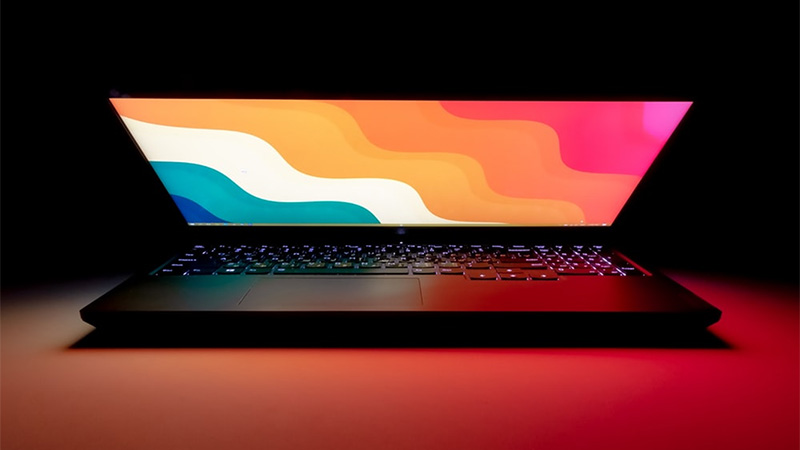
HP shifts strategy amid booming PC market to better manage supply deficit
A look at HP's supply chain challenges, including how it is dealing with component shortages, and the general PC outlook for upcoming quarters.
Canalys predicts PC demand will start cooling off as the market nears saturation. Nevertheless, we are still in an era where demand outstrips supply, resulting in vendor backlogs, PC companies navigating component shortages, COVID-related factory lockdowns, global freight disruptions and market-wide inflated prices. How are the major vendors being affected by this ongoing crunch?
Lenovo’s IDG revenue climbed a record 28% year on year, while operating profit increased by an all-time high of 43%, according to its latest financials. Dell, too, has seen great gains, with PC revenue up 27% year on year, as well as a stellar 39% annual increase in operating profit. These two leading PC rivals had their finest quarters yet, with record shipments. On the other hand, HP lost market share in many markets, and its revenue fell 3% annually, driven by a drop in the commercial sector. The company’s overall PC shipments remained flat year on year, with much of its revenue generation attributed to clearing a Chromebook backlog, the shift in focus to premium PC products and increased device prices amid ongoing component shortages. The company had also cut its promotional and marketing expenditure to help with operating income. It’s worth noting that while commercial PC shipments are gaining traction around the world, HP suffered a loss in this segment. What underlying difficulties led to HP’s surprising quarter, which was substantially different from that of the other two leading challengers in the PC space?
In its latest financials, HP put supply chain constraints at the top of the list of reasons for its performance this quarter and touched on how they affected both Print and Personal Systems revenue, especially in the EMEA and APJ regions. HP has also been the victim of some cancellations of Chromebook orders from US schools, due to a lack of clarity on fund allotment by the US government. Another element that contributed to HP’s relative underperformance is its acknowledged priority mix-up when it comes to orders. The company had largely focused on clearing Chromebook backlogs while its commercial and consumer backlogs expanded dramatically.
Though HP is doing a great job balancing supply chain constraints, it is now keen to bypass reliance on ODMs and maintain direct contacts with component suppliers, which will definitely put it in a stronger position. Understandably, these conversations will also help HP understand the pressure on the supply chain from industries outside of PCs, including automotive, cloud and servers.
But HP’s strategic shift, admittedly, will not happen in a quarter or two. It will take time for it to make the necessary modifications to its operations framework. The company so far has a quarter’s worth of backlog and is well-protected in terms of shipments for the foreseeable future. Also, Chromebook orders are expected to pick up through the second half of 2021 and the first half of 2022 as the Federal Government announced its Emergency Connectivity Fund (ECF), a one-time US$7.171 billion program approved by the American Rescue Plan of 2021 that reimburses remote learning expenses for K-12 schools and public libraries for devices priced below US$400.
Looking to Q3, despite the increased prices and ongoing component shortages, almost all suppliers predict premium products, such as workstations and gaming PCs, will gain traction. Dell predicts above-average seasonal growth, fueled by the commercial boom and clearing backlogs, and Lenovo has followed suit, focusing on the commercial and gaming areas for long-term growth. HP itself predicts above-average seasonal growth for Q3, as a result of clearing backlogs and Chromebook demand revival, offsetting the current quarter’s performance.
Canalys, like the top vendors, believes that backlogs will be a major short-term driver of PC demand and there are also significant new sources of demand originating from the global pandemic’s behavioral shifts. The first source is the immediate requirement for businesses, schools and consumers to be appropriately prepared for smaller-scale flare-ups of case numbers that result in snap lockdowns. The second is a longer-term movement in behavior toward hybrid or flexible working. As anticipated by HP, the education segment has proved itself one of the larger drivers of PC demand growth over the past few months and the shift in focus toward broader digitalization of education in key and emerging markets will contribute to the rising demand in this segment. HP’s strong foothold will reap long-term benefits for the company.
Share this article
CATEGORY
- All
- Canalys Forums
- Canalys Forums,Channels
- Canalys Forums,Channels,Partner Program
- Canalys Forums,Channels,Sustainability
- Canalys Forums,Sustainability
- Enterprise
- Market
- Market,Canalys Forums,Channels
- Market,Canalys Forums,Channels,Cloud
- Market,Canalys Forums,Channels,Sustainability
- Market,Channels,PC
- Market,PC
- Market,Smartphone
- Market,Technology,AR/XR/VR
- Market,Technology,Automotive
- Market,Technology,Canalys Forums,Channels
- Market,Technology,Canalys Forums,Channels,Cloud
- Market,Technology,Channels
- Market,Technology,Channels,Cloud,Partner Program
- Market,Technology,Smart Personal Audio
- Market,Technology,Smart Speaker
- Market,Technology,Smartphone
- Smart Personal Audio
- Smartphone
- Technology
- Technology,Canalys Forums,Channels,Security
- Technology,Channels
- Technology,Channels,Cloud,Partner Program
- Technology,Channels,Partner Program
- Technology,Unified Communications
- Technology,Wearable Band

